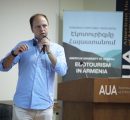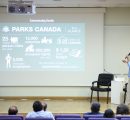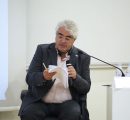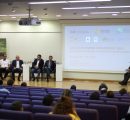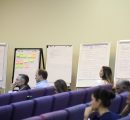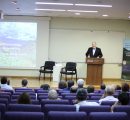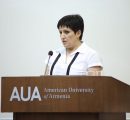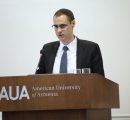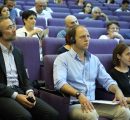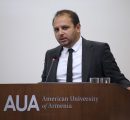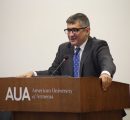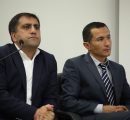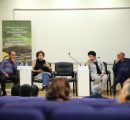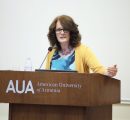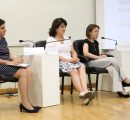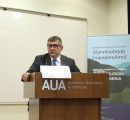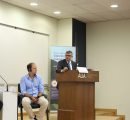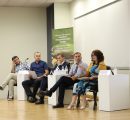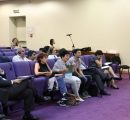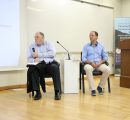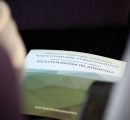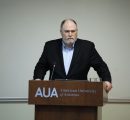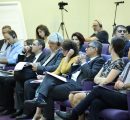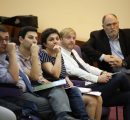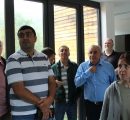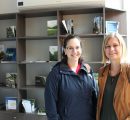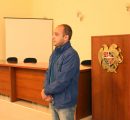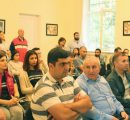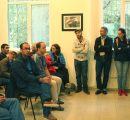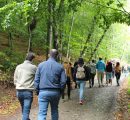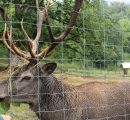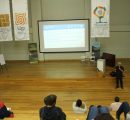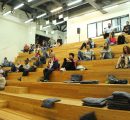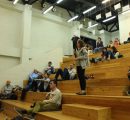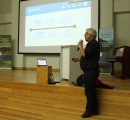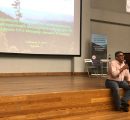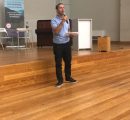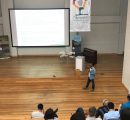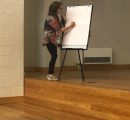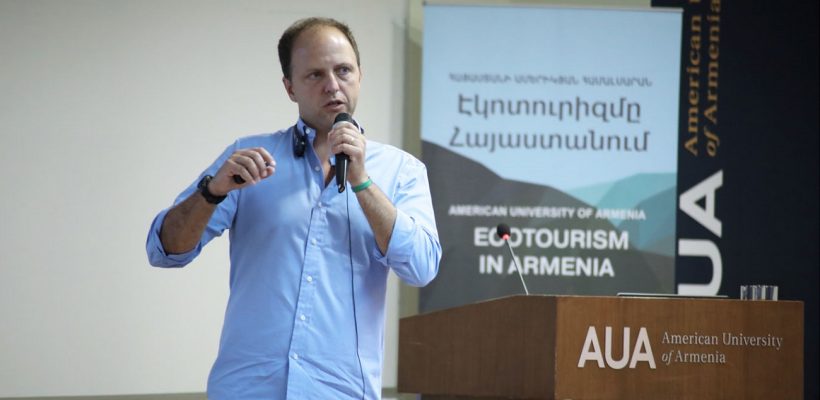
Key Stakeholders Discuss Ecotourism and Protected Areas
4 min readYEREVAN, Armenia – The fourth annual AUA Ecotourism Conference was held on August 30-31, 2019. The event was organized by the American University of Armenia (AUA) Acopian Center for the Environment in partnership with the Tourism Committee of the Ministry of Economy of the Republic of Armenia (RA), the RA Ministry of Environment, World Wildlife Fund (WWF) Armenia and Transboundary Joint Secretariat funded by KfW German state-owned development bank.
Experts from The International Ecotourism Society (TIES), EUROPARC Federation, and the International Union for Conservation of Nature (IUCN) were among the key speakers. The invited participants included tour operators, policy makers, and protected area managers and experts.
This year’s Conference focused on the role of protected areas in ecotourism and sustainable tourism development, which ensure protecting the environment and enabling nearby communities to benefit from growth in tourism.
Protected Areas and the National/Regional Economy
Dr. Thiago Souza from the IUCN Commission on Protected Areas’ Tourism Specialists Group talked about the global experience with investing in protected areas and the returns to the national and regional economies. “Politically, the value of investing in protected areas is often lost because we typically don’t do an adequate economic analysis,” points out Dr. Souza.
He explains that in most places officials simply perform accounting or financial analyses. That is, they look at the budget of the protected area and the revenues generated from entrance fees. “For most protected areas, the fees would be substantially smaller than the budgets of the protected areas,” he elaborates. “In Brazil, for instance, budgets can be 9 times greater than fees collected.”
But when an economic analysis is conducted that considers more broadly the visitor spending and taxes paid, as well as the multiplier effects of that spending, a very different picture appears. “In Brazil, we’ve been able to show that for every dollar spent on protected areas, the national economy gains 15 dollars. The returns on investment are staggering,” says Dr. Souza. Europe, shows smaller but still impressive numbers. Once adequate investments are made in protected areas and the needed infrastructure is in place, for every euro spent on protected areas there will be 7 to 10 euros of GDP activity.
|
A 2015 study shows that there are an estimated 8 billion visits per year to protected areas worldwide. This generates about US $600 billion per year in direct in-country expenditures (Balmford et al., 2015). |
Growing Market of Ecotourism and Visiting Protected Areas
Jon Bruno, the executive director of TIES, offered a global perspective on the growth of the ecotourism sector. “Over 90 nations now have an ecotourism or sustainable tourism initiative nationally or at a regional level. This has happened in the last 30 years; there is no other form of tourism or industry that has become so fundamental to the global economy so quickly.”
Bruno believes that this trend is growing as travellers are developing greater sensitivity toward sustainable tourism. He says, “Travelers have greatly increased both their awareness of ecotourism and their willingness to increase payment to ensure a sustainable travel experience. Seventy percent of people under 30 say sustainable travel is a priority.”
This is a market for which countries like Armenia have to be prepared as part of their efforts aimed at sustainable development. “Ecotourism and sustainable tourism can help local communities economically and create a logic for protecting their natural assets. Ecotourism provides the strongest community revenue and the strongest return on investment,” emphasizes Bruno.
Need for Networks, Guidelines and Standards
Other key speakers at the Conference were Carol Richie, executive director, and Paulo Castro, council member of the EUROPARC Federation. The EUROPARC Federation is the network for Europe’s natural and cultural heritage. The Federation works to improve the management of protected areas in Europe through international cooperation, exchange of ideas and experience, and by influencing policy. The Federation currently has over 418 members in 41 countries. Armenia and its protected areas are eligible to become members of the Federation, which will offer connections with a wide network of expertise in protected area management.
A support the Federation offers to its members is the European Charter for Sustainable Tourism in Protected Areas, a practical management tool for developing tourism sustainability. “Poorly managed tourism allows societal tensions to persist, weakens local communities’ connection to their heritage, landscape and environment, erodes cultures and values and does irreparable damage and change to nature, wildlife and the environment,” explains Richie.
She continues, “Through the European Charter for Sustainable Tourism in Protected Areas, EUROPARC seeks to safeguard against this by fostering partnerships among local communities, protected area management, and tourism businesses. It does so with the aim of supporting local livelihoods, increasing awareness of the need for sustainability, and promoting cooperation locally, nationally, and internationally.”
Paulo Castro then offered details on how the process of European Charter for Sustainable Tourism in Protected Areas works. “It’s not a fast process. You have to be patient and committed to a long term, multi-stakeholder process. And the applicant to the charter is the protected area management. They have to create a permanent forum for participation of all stakeholders. They have to also demonstrate that they have good coordination between public administrations of the environmental protection and tourism activities. Things that can the protected area needs to show, for instance, is the creation and promotion of tourism products based on local resources,” says Castro.
Panel Discussions and Site Visits
The conference included six panel discussions on key topics related to sustainable tourism in protected areas. The panelists included government officials, researchers, international organizations and NGOs active in protected area support and tourism. The discussions helped identify the key advantages and gaps in Armenia with respect to advancing sustainable tourism in protected areas. The participants of the Conference also visited the Dilijan Tourism Information Center, the Dilijan National Park Tourism Visitor Center, and the Caucasian Red Deer Reintroduction Center to see first-hand the existing tourism infrastructure and potential of one of the main national parks in Armenia.
Presentations delivered by the keynote speakers and the video recording of the Yerevan event are available on the official web page of the Ecotourism Conference.
The AUA Acopian Center for the Environment, a research center of the American University of Armenia, promotes the protection and restoration of the natural environment through research, education, and community outreach. The AUA Acopian Center’s focus areas include sustainable natural resource management, biodiversity and conservation, greening the built environment, clean energy, and energy efficiency, as well as information technology and the environment.

